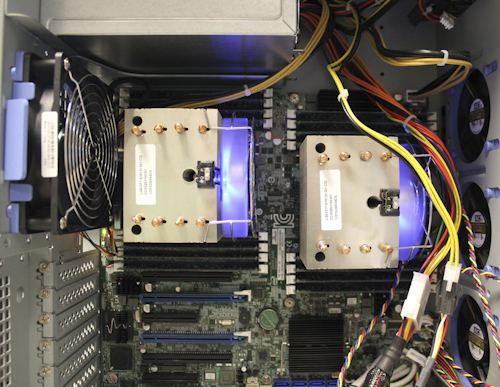In testing the SMART CloudSpeed 1000 and 1000E, along with all enterprise drives, we focus on long term stability. In doing so, we stress products not only to their maximum rates, but also with workloads suited to enterprise environments.
We use many off-the-shelf tests to determine performance, but we also have specialized tests to explore specific behaviors we encounter. With enterprise drives, you will see that we do not focus on many consumer level use-cases.
Our hope is that we present tangible results that provide relevant information to the buying public.

Although we received both a 480GB CloudSpeed 1000 and 400GB CloudSpeed 1000E, the specifications are nearly identical. While we did see lower performance with the 1000 in random access patterns, including 4K and server workloads, the results were directly proportional to the difference in random write performance. The overall behavior of the controller and NAND were comparable.
For our review, we are comparing the SMART CloudSpeed 1000E 400GB.
LATENCY
To specifically measure latency, we use a series of 512b, 4K, and 8K measurements. At each block size, latency is measured for 100% read, 65% read/35% write, and 100% write/0% read mixes.
A common theme that became apparent during testing that the 1000E was much more comfortable at 4KB and higher block sizes. When compared the to the Intel S3500, the 1000E was the clear winner at 4 and 8KB, but was well behind at 512 bytes.
As we looked at maximum latency, we were a little surprised at the results. Maximum latency, when any write operations were involved, was always 60-70ms. This is quite a bit higher than the competition, where we are use to seeing 10-20ms maximums. Once we moved into 100% read operations at 4 and 8KB, the number dropped to under 2ms, which is class leading.
As we noted above, this is an engineering sample, so some of these behaviors may go away as firmware is tuned for final production. But, are those maximums indicative of noisy, unreliable behavior? To find that out, we need to look at our advanced write tests.
 The SSD Review The Worlds Dedicated SSD Education and Review Resource |
The SSD Review The Worlds Dedicated SSD Education and Review Resource | 

Why is it that “Enterprise” SSDs do not have SAS interface?
Without SAS “Enterprise” devices should really be called “Prosumer”.
That’s a heck of a jump considering the large number of enterprise systems that utilize the SATA interface. I am not aware of many prosumer sales for a product such as this, however sales of the original 500 version would have justified the initial investment for development of the drives.
One step at a time…
At SNIA’s IOPS test, which QD did u used for the test? 4? 16? 32?? 128???
ki – We use a QD of 32, unless otherwise noted. I’ll make sure to call that out next time.
Very slowly recognition In Lenova T61, difficult to use it, Have you any idea about this problem ?
How did you do secure erase? I had one, but got failure message for secure erase. thanks. I can do secure erase for other drive including some Datacenter drives. thanks.
You need to put the computer to sleep and then wake it up, otherwise its stuck in freeze state.
But if frozen, I get the message that the drive is frozen. But this case, I just got : secure erase not completed successfully. I checked this drive by Intel RST, but not frozen status actually. Any advice will be great for me.